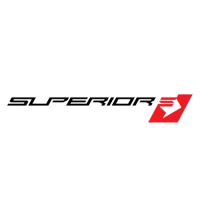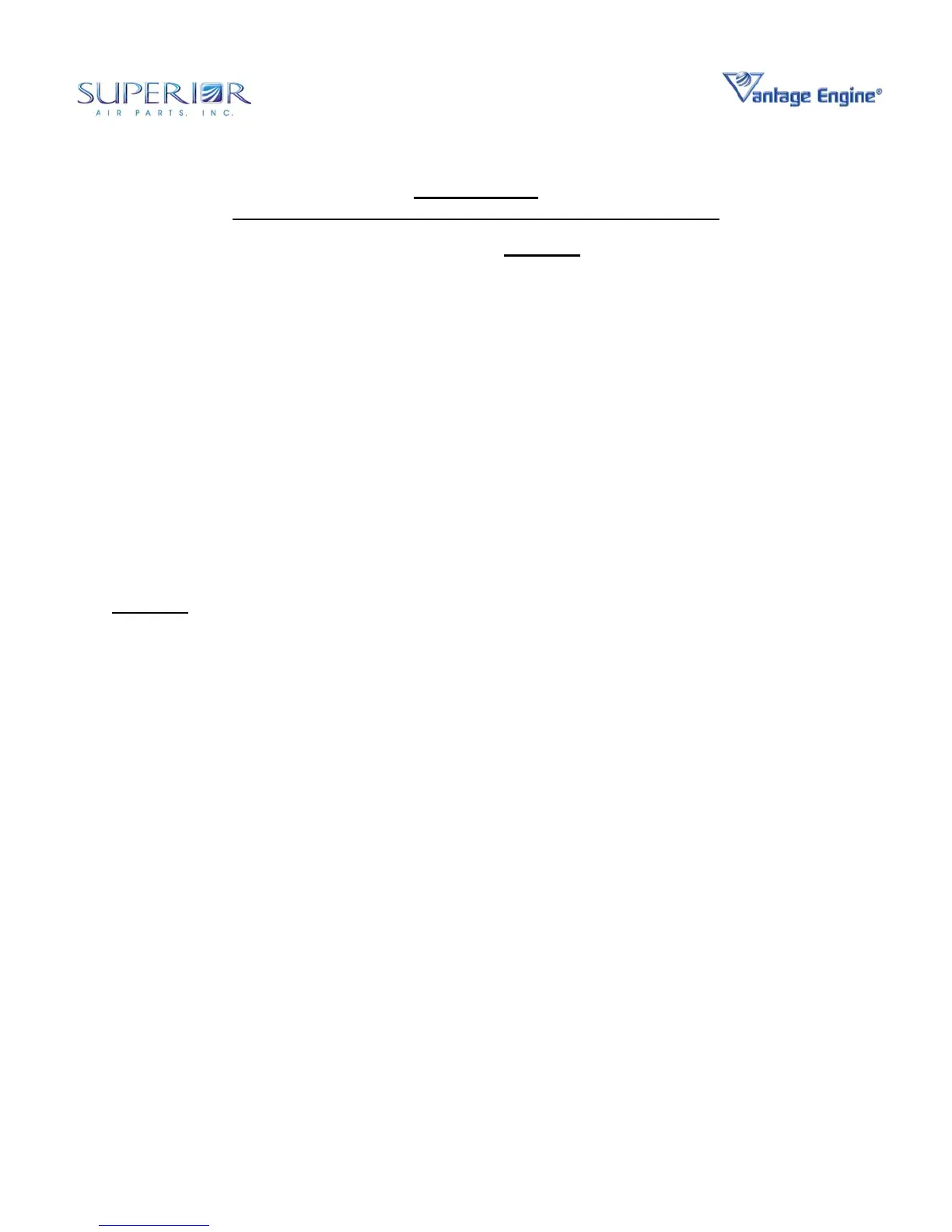Overhaul Manual
O-360 and IO-360 Series Engines
5
© March 2005 Superior Air Parts Inc.
72-00-13
Repair Procedures
REPAIR NO. 1
THREADED AREA REPAIR AND STUD REPLACEMENT
Repair and Replacement
(1) Repair defective threaded areas on studs
with a suitable die or tap. Small nicks can
be removed satisfactorily with files or small,
edged stones.
(2) Replace defective studs with a collet grip
tool, or other appropriate tool.
(a) If stud is broken and tool cannot be
used, drill a hole into the stud to use a
pilot bushing. A stud extractor may then
be utilized to remove the stud.
(b) After defective stud is removed, check
hole threads for damage. Repair or
reject as required. Also check thread
size to determine replacement stud
thread size.
(c) Use compressed air to clean out
shavings prior to installation of new
stud.
WARNING
: WHEN YOU USE COMPRESSED
AIR TO CLEAN OR DRY PARTS, MAKE SURE
THAT THE PRESSURE IS NOT MORE THAN
30 PSI. DO NOT DIRECT THE AIRSTREAM
AT PERSONNEL OR LIGHT OBJECTS. PUT
ON GOGGLES OR A FACE SHIELD TO
PROTECT YOUR EYES. IF YOU GET AN EYE
INJURY, GET MEDICAL ATTENTION.
WARNING
: LUBRICANTS ARE TOXIC AND
FLAMMABLE. DO NOT BREATHE VAPORS.
BEFORE YOU USE, READ THE MATERIAL
SAFETY DATA SHEET (MSDS) FROM THE
MANUFACTURER OR SUPPLIER. USE IN A
WELL VENTILATED AREA FREE FROM
SPARKS. WEAR PROTECTIVE GEAR. IN
CASE OF EYE CONTACT, FLUSH WITH
WATER FOR 15 MINUTES AND SEEK
MEDICAL ATTENTION. IN CASE OF SKIN
CONTACT, WASH WITH SOAP AND WATER.
(d) Coat threads of new stud with lubricant
or Loctite™ and drive stud to correct
depth with suitable stud driver. Torque
IAW Fits and Clearances section of this
manual.
Preservation
Coat threads of repaired threaded areas or
studs with lubricant or preservative oil.

